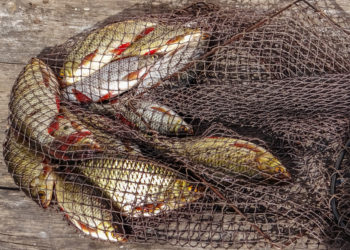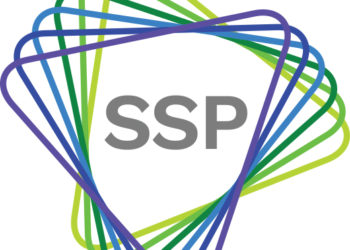Editor’s Note: Today’s post is by Stewart Manley. Stewart is a lecturer at the Faculty of Law, University of Malaya, Kuala Lumpur, Malaysia. His work in the scholarly communications area focuses on high-profile litigation involving publishers and publishing ethics.
At 9 a.m. (PST, GMT-8) on Wednesday, June 10, 2020, the U.S. Court of Appeals for the Ninth Circuit is scheduled to stream live video of the oral arguments in Federal Trade Commission v. OMICS Group Inc., et al., from its website and YouTube channel. Members of the scholarly publishing community may enjoy watching judges and lawyers argue over the finer points of predatory journals, peer review, the impact factor, journal indexing, and article processing charges. Sessions generally last between 30 minutes and an hour. This blog post provides a preview of some of the arguments that will be presented.

As promised, OMICS – called “the evil empire” by retired librarian Jeffrey Beall – appealed last year’s $50.1 million judgment against it. Followers of the case may recall that the FTC accused OMICS of deceiving researchers about the nature of their publications and conferences. Article processing fees were often hidden in footnotes, the FTC alleged, and many editorial members, whose names, affiliations, and photos were prominently displayed on the OMICS website, had never agreed to be on the OMICS journal boards. U.S. law – specifically 15 U.S.C. Section 45(a)(1) – prohibits these types of “deceptive acts or practices in or affecting commerce.”
On March 29, 2019, Judge Gloria Navarro of the U.S. District Court in Nevada ruled in favor of the FTC on summary judgment – a legal process that allows a judge to forego a trial when there are no material facts in dispute. This was a big victory for the FTC because the deck is stacked in favor of the non-moving party (here, OMICS) during a hearing on a motion for summary judgment. Judge Navarro was required by law to view the facts in the light most favorable to OMICS and to draw all reasonable inferences in favor of OMICS. The judges on the Court of Appeals, therefore, will hear OMICS argue, for the most part, not that it does not deceive but instead that there are “genuine issues of material fact in dispute” and that Judge Navarro incorrectly applied the law. (OMICS Group Inc. was incorporated in Nevada in 2012. All appeals from federal courts in Nevada, which falls within the Ninth Circuit, are heard by the Court of Appeals located in San Francisco.)
After going through the court filings, I think it’s fair to say that the arguments boil down to disputes over evidence – its amount and its quality. OMICS argues, as just one example, that if the FTC provides 50 consumer complaints, it is only 0.08% of the over 65,000 manuscripts submitted during the time period at issue. In another instance, OMICS says that the FTC only supplied evidence of a single conference where attendees were disappointed, which is far below the evidence needed to justify an order of summary judgment.
After claiming that it provided “voluminous exhibits” of evidence, the FTC in similar fashion attacks the evidence from OMICS. It argues, for instance, that much of the publisher’s evidence comes from the self-interested statements of its CEO, Srinubabu Gedela. On other occasions, the FTC points out that OMICS provided no evidence to support its claim that it had 50,000 editors, no evidence that researchers understand “impact factor” to mean something other than the Clarivate Analytics Journal Impact Factor, and no evidence that some of its journals are included in “reputable indices.”
These arguments about the quantity and quality of evidence will likely dominate the oral submissions before the Court of Appeals on June 10 and will almost certainly revolve around three major areas of contention raised by the parties. First, was the evidence of OMICS’ alleged deceptive practices presented by the FTC at the Nevada District Court strong enough to satisfy the “no genuine issues of material fact in dispute” standard of summary judgment? Second, was Gedela’s position at the top of management and involvement in OMICS’ operations sufficient to make him personally liable for the $50.1 million because he knew about, participated in, or at least recklessly disregarded the allegedly deceptive practices? Third, was it proper to base the amount of $50.1 million on OMICS’ net revenues (less chargebacks and refunds)?
Researchers might be amused that several of the arguments raised by OMICS and the FTC are about what academics think when submitting manuscripts to journals.
- When you see the term “impact factor” on a journal’s website, do you think only of Clarivate’s Journal Impact Factor? (The FTC says you do; OMICS says you don’t.)
- When you read that a journal is “open access,” do you assume that the journal charges a fee? (OMICS says you do; the FTC says you don’t.)
- Do you think standard peer review takes at least weeks or months? (The FTC says it does; OMICS says it doesn’t.)
- Should we presume that researchers who publish in OMICS journals more than once cannot claim to have been deceived? (OMICS says we should; the FTC says we shouldn’t. OMICS argues, “Fool me once, shame on you. Fool me twice, shame on me.” There is evidence that some researchers are not fooled when they submit to predatory publishers.)
My personal answers are yes (although this has changed since doing research on predatory publishers); no (some open access journals do not have fees because they are funded by organizations or institutions); yes (desk rejections can be quick but I cannot recall ever having received peer review comments in under a month from the date of submission); and no (a blanket presumption is probably unfair but, in OMICS’ defense, I cannot believe that all researchers who submit to OMICS journals are unaware of its publishing practices). On my scorecard, that’s three for the FTC and one in between.
If OMICS loses on appeal, it can still petition for a hearing from the U.S. Supreme Court (the Supreme Court generally only accepts around 2% of the approximately 7,000 annual requests for appeal; in contrast, requests to the U.S. Courts of Appeal are generally guaranteed).
If OMICS wins, what happens next will depend on what the Court of Appeals orders Judge Navarro to do. It could, for instance, order her to reconsider the facts or take additional evidence (after which she could still affirm her original decision). It could order her to merely recalculate the monetary award. More drastically, the Court of Appeals could reverse Judge Navarro’s decision and order a trial in the Nevada courtroom if it determines that, for example, she failed to take into account material facts raised by OMICS.
Regardless of what happens in this case, it seems that predatory journals will continue to be a hot topic in scholarly publishing for some time. Even OMICS has a view:
Since the last decade or recent years, a specific term has been introduced to describe certain spirited players in the market, and one of these is the use of predatory description, specifically for an online business on account of inadvertent communication gap in payment mode or time-frame, giving rise to conflicts of interest. However, there is a very thin line between the good and bad practices. One needs a very careful investigation and development of a broader sight with an independent approach.
The legal case against it will help determine whether OMICS is merely a “spirited player” or something worse and on which side OMICS stands on that “very thin line” between good and bad practices.
I hope this brief overview encourages you to watch the oral arguments. Video and audio recordings will be available a day later.
I thank the United States Court of Appeals for the Ninth Circuit for approving my application for an exemption from the Electronic Public Access Fees associated with accessing the filings in Federal Trade Commission v. OMICS Group Inc., et al., Case No. 19-15738.
Discussion
19 Thoughts on "Guest Post — Streaming Live – Oral Arguments in FTC v. OMICS"
Thank you. Very interesting overview.
I tend to be a but strict on this sort of thing myself, but for me, the fact that a journal claims as members of its editorial board people who have never agreed to serve in that role, nor even been asked to do so, is all the evidence required against them. That is fraud, plain and simple.
Thanks for commenting. You are right. Listing editorial board members who had never agreed to serve would likely be fraud and would clearly fall into the deceptive practices prohibited by law. (Deceptive practices are easier to prove than fraud because there is no need to prove intent to deceive.)
That being said, the FTC probably could have done better on this point. It argued that OMICS only produced evidence of 380 individuals (out of 14,598) who agreed to serve, but the burden here lies on the FTC and it only provided one signed declaration (by an associate professor at the University of Pittsburgh School of Medicine) who from the outset had never agreed to be listed as an editorial board member. The other supporting evidence was less persuasive (one researcher had been on a board before a journal was purchased by OMICS and was kept on the board afterwards, but he did not indicate that he requested to be removed; one declaration was by an FTC employee who had a conversation with a complainant whose name was redacted (OMICS argues that this is inadmissible hearsay); some unsigned complaints were taken from a consumer complaint database; other academics had initially agreed but then later could not get themselves removed and some were elevated to a higher board position without consenting). I imagine the FTC could have tracked down more editorial board members who from the outset had not agreed to be on the boards.
Thanks for the interesting synopsis.
Would it be possible for the court to subpoena the peer reviews (or lack thereof) conducted by OMICS journals? In theory, there should be 2-4 peer reviews of at least 500 words for each article published by OMICS. I’m dubious that such peer reviews exist, but it would be a way that OMICS – or any journal facing accusations of predation – could prove the legitimacy of its peer review processes.
Thanks for your comment. This is a good point and indeed subpoenas can be used to require parties to produce documentary evidence. At the District Court proceedings, OMICS resisted turning over its peer review records, in part claiming that the identities of peer reviewers and peer review comments were confidential. Eventually it did hand over a set of spreadsheets and said it was the only peer review data it had. The sheets contain records for almost 69,000 articles. The FTC argues that only about 49% of these show some indication of peer review. OMICS argues, however, that the file merely shows that no notations were made on the other 51%, not that no peer review was conducted. I was unable to locate the spreadsheet in the court documents to verify the data myself.
The San Francisco Court just re-organized its youtube files. Here’s an updated link to the proceedings: https://www.youtube.com/watch?v=F5KtXz2y_vE
Here is a link to the recorded hearing:
https://www.youtube.com/watch?v=2OMjrNke4BI&feature=youtu.be&t=6713
Incidentally, I think the FTC’s lawyer saved her strongest ammo for the end of her speaking time, where she zeroed in on the lack of proof that OMICS articles are reliably and thoroughly peer reviewed:
Thanks for posting this! For those who want to go straight to the FTC v. OMICS arguments, they begin at 1:51:53 and go to the end of the recording.
Great rundown, thanks very much.
The “Fool me once, shame on you. Fool me twice, shame on me.” argument would seem to be a sticky one for the FTC considering the evidence showing many authors intentionally use fraudulent outlets (such as those published by OMICS) to boost their publication record.
Thanks for commenting. Like you, I have seen research lately showing that a number of academics know full well the nature of publishers like OMICS before they submit their manuscripts. OMICS argues that for the purpose of calculating the monetary award, there should be no presumption that repeat customers are deceived customers unless the FTC proves otherwise. The FTC counters that it first has the burden to reasonably approximate the unjust gains and then the burden shifts to OMICS to offer concrete and affirmative evidence that customers were not deceived (which it has not done).
Here in South Africa, universities get a sizeable government subsidy for journal publication – but they are vetted. The journal needs to be on a recognized index (ISI, Scopus, etc.) or to be a local journal vetted for quality. For this reason, most people are not tempted to go for junk journals – unless they are new to the system.
My view is that most authors who publish in predatory journals must know that they are predatory. Of course, it is impossible to know with certainty what goes on in people’s heads but I have published some research that supports this position (e.g. at a Canadian university, more experienced/senior researchers were more likely to publish in predatory journals).
This being said, I wonder if the FTC could respond that companies like OMICS are enabling these people to defraud their employers. Consider the case of those who use OMICS conferences to finance holidays at their university’s expense. For example, I recently found out, through a freedom of information request that my university spent $5644.66 to send a senior administrator to a OMICS conference in Europe. Although it is difficult to believe that a senior administrator could be fooled by OMICS, or have not heard of the legal case, I do wonder if OMICS could not still be held responsible for enabling such behavour. E.g. being part of a conspiracy or something like that? Does anyone here have the legal background to give an opinion on this question?
Steward, I just realize that we have communicated in the past and that you work in a law school. Anyway, I will be interested in what you think.
Hello Derek. Thanks for commenting. You raise an interesting and creative point. You are right that some countries have an offense called conspiracy to defraud and there also is the legal concept of aiding and abetting. My knowledge is not extensive in these areas but I understand that these types of offenses require agreement among the parties (in the case of a conspiracy) or actual knowledge of the fraud/crime and sometimes even intent to commit it. I think it would be challenging, therefore, to hold a publisher like OMICS liable in the situation you pose unless there was some evidence that the senior administrator and OMICS were working together. A more practical obstacle is that the FTC would probably expect the university (rather than the FTC) to take action for this particular type of situation because its direct grievance is against its own employee. The university might do well instead to develop guidelines to ensure that its staff attends only conferences of high quality.
As with all my comments, please understand that they do not, and are not intended to, constitute legal advice but instead are for general informational purposes. Anyone who believes that they have been defrauded or deceived should consult their own lawyer.
PS – The FTC’s guidance about making a complaint can be found here: https://www.ftc.gov/faq/consumer-protection/submit-consumer-complaint-ftc
Steward, thanks for the information. It clears up a lot of questions that I had been wondering about.
Hi Derek,
By any chance is that freedom of information request publicly available? Correct me if I’m wrong, but I believe British Columbia publishes the results of FOI requests online. I searched for your request here, but couldn’t find it.
https://www2.gov.bc.ca/gov/search?id=4BAD1D13C68243D1960FECBBF7B8B091&q=FOI
Hi Kyle,
I was not aware of that website. However, I see that they don’t have any university FOI requests so I am guessing that it only deals with Government itself and not arms length agencies. I tried Googling the number my FOI request was given and nothing comes up. I take this to mean it is not posted publicly.
Given TRU did not fight the request, they seem to admit that it is not confidential information. As you determined I am in BC, you likely also determined my email. Why not email me and I will respond with the request?
I edit an open access journal, South African Computer Journal. We charge a publication fee because South African university authors earn a generous government subsidy and can afford it, but waive the fee for authors who can’t. This helps fund a production editor. Making papers open benefits authors and researchers as very few libraries keep absolutely comprehensive collections and commercial publishers like Springer and Elsevier have become increasingly expensive. It is very hard for a small emerging journal, no matter how good, to get onto a library budget.
Junk journals are very damaging as we have had to labour hard at building credibility and get a lot of submissions that are poorly written from authors who expect rapid turnaround – particularly since we were added to Scopus, as there is clearly growing pressure to publish in journals with some standing.
Junk journals superficially make it easier to publish but they pollute the academic search space and give novice academics a false impression of what it takes to get published.
Whether this one gets taken down or not, this sort of action is long overdue. Governments in countries with large numbers of emerging academics as in India ought to be the ones taking action, not the US.
Thanks for joining the discussion and sharing your experience in South Africa. I think it’s great that your journal provides fee waivers for those who can’t afford it. I liked your final comment about countries like India taking action. As you probably already know, Demir found that the greatest number of researchers who publish in what he calls “predatory/fake journals” were from India, Nigeria and Turkey (https://doi.org/10.1016/j.joi.2018.10.008) while Xia, et al. found that they were mostly from India, Nigeria and some other African and Middle East countries (https://doi.org/10.1002/asi.23265). I think it would be interesting to hear from these researchers about whether they complain to their government consumer agencies and if not, why. During my research on the OMICS case, I read a number of complaints in the court filings. A researcher from Pakistan, for example, wrote a letter to OMICS that included: “Please delete my paper from this journal. I am not happy with this publication. Please please withdraw my paper. I requested many times that I don’t want to publish my paper in this journal. I’ll be very thankful to you, if you delete my paper from the system …. please please delete my article from the journal …. When you requested my even money again and again, then I did not send you money, then why you published in your journal. Please.” While there are surely those who submit to dubious publishers knowing full well what they are getting themselves into and there are those who don’t do their due diligence before submitting their manuscripts, it is difficult not to feel sympathy for this Pakistani researcher’s loss of his/her hard work. Lawsuits are probably not the solution but may be one prong in a broader movement to educate academics about publisher and journal quality, alter incentives that encourage quantity over quality, deter deceptive publishing practices and steer publishers towards increased transparency.



